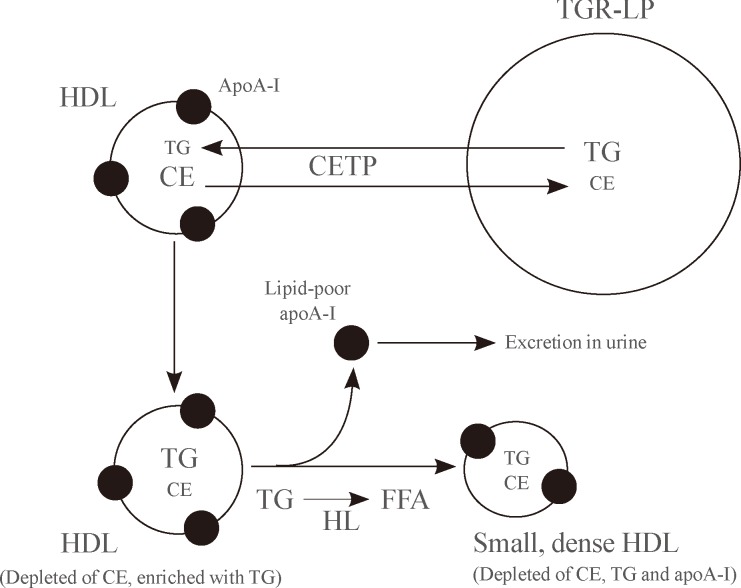Fig. 1.
Low concentration of high density lipoprotein cholesterol (HDL-C) and apoA-I in patients with hypertriglyceridemia. Cholesteryl ester transfer protein (CETP) promotes the transfer of cholesteryl esters (CE) from high density lipoproteins (HDLs) to triglyceride-rich lipoproteins in exchange for triglyceride (TG). This generates HDL particles that are depleted of cholesteryl esters and enriched in triglyceride. This triglyceride enrichment provides HDLs with the preferred substrate for hepatic lipase that hydrolyses the newly acquired HDL TG. The resulting reduction in volume of the HDL particle core and consequent decrease in HDL particle size leads to the dissociation apolipoprotein (apo) A-I (the main HDL protein) from the HDL particle surface. The dissociated apoA-I may then be excreted in the urine and thus lost from the body. TGR-LP, triglyceride-rich lipoproteins; HL, hepatic lipase; FFA, free fatty acid.

